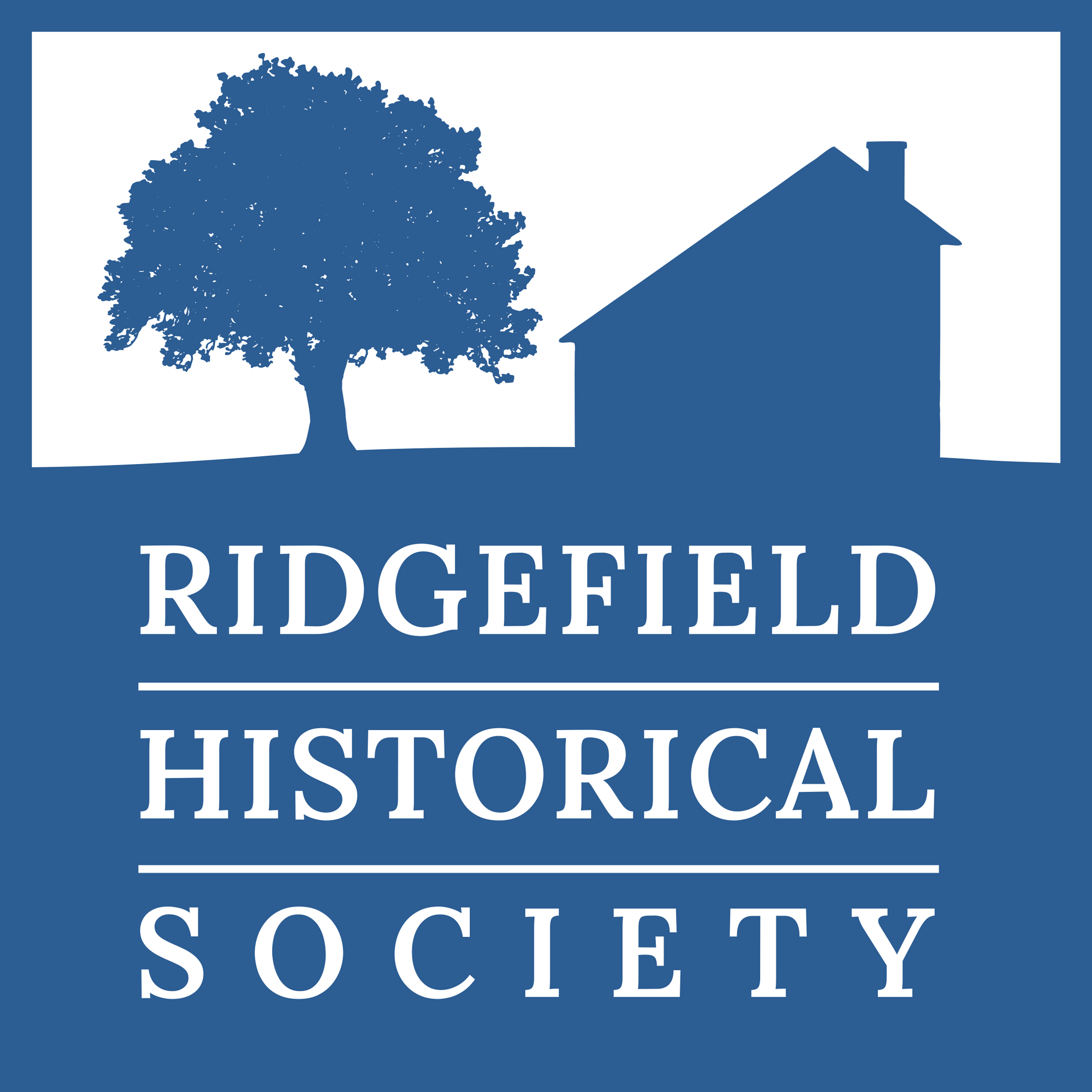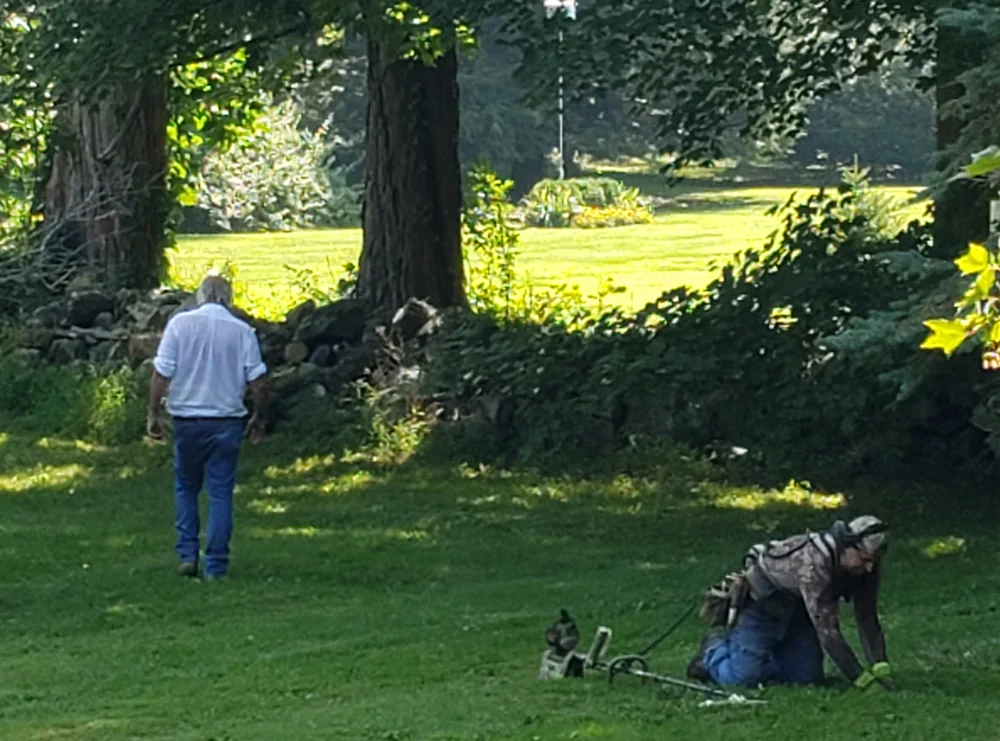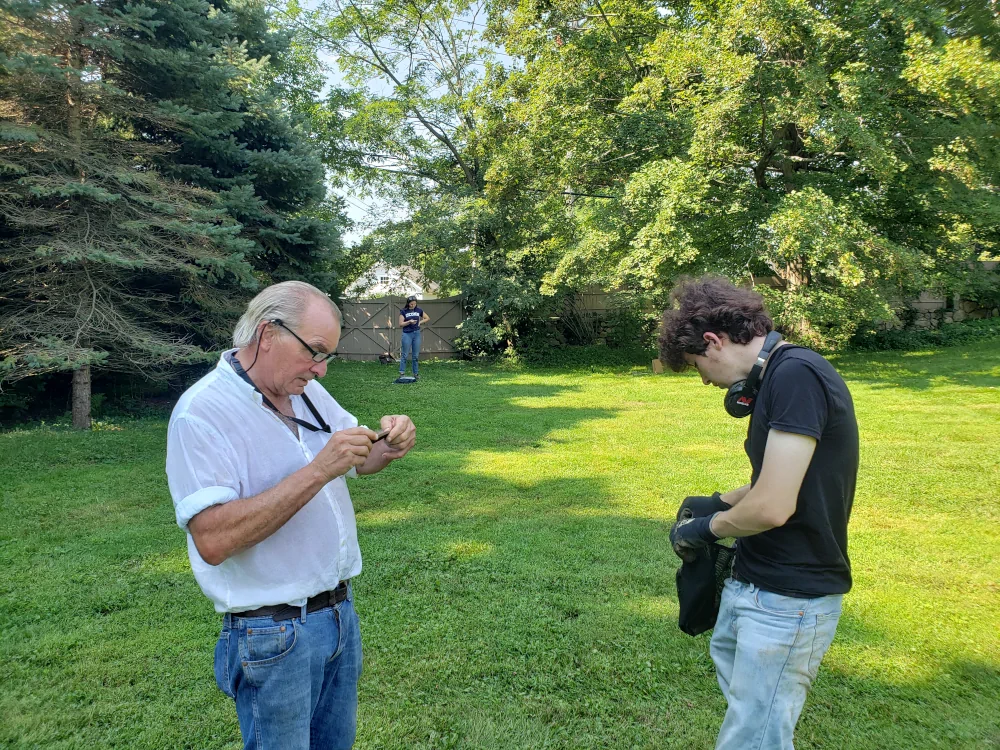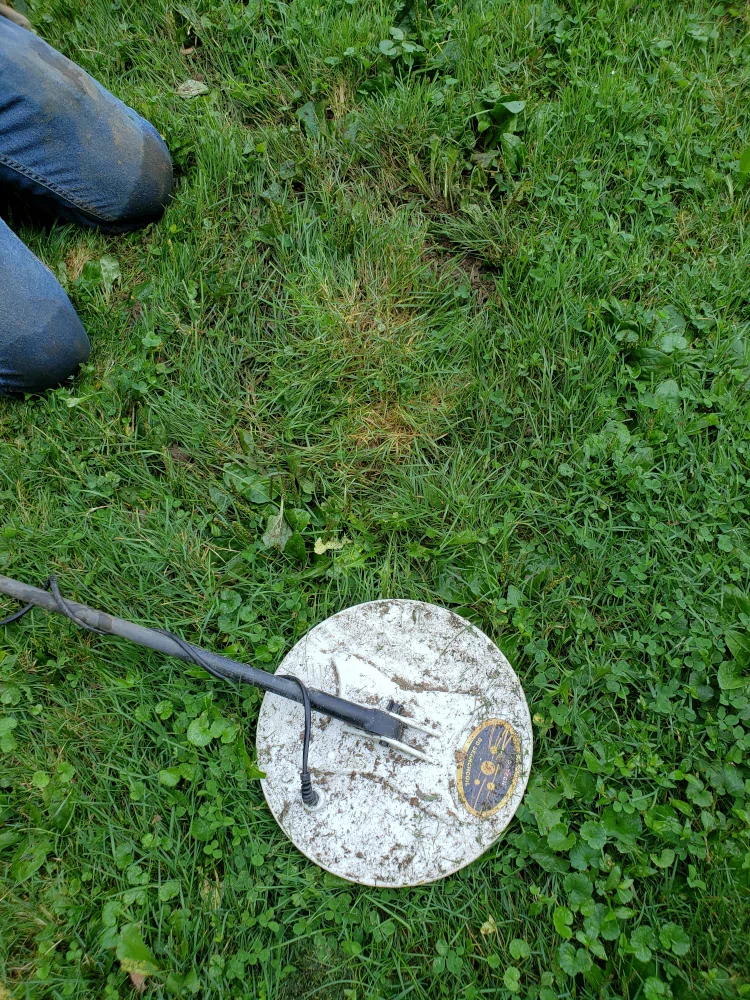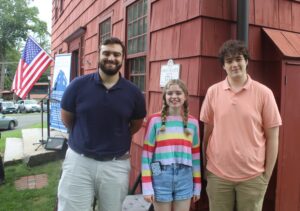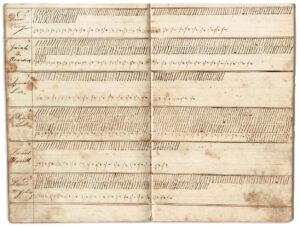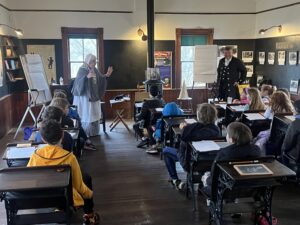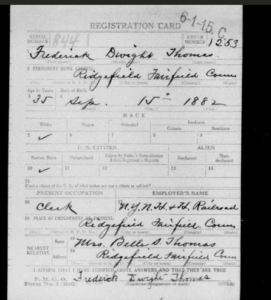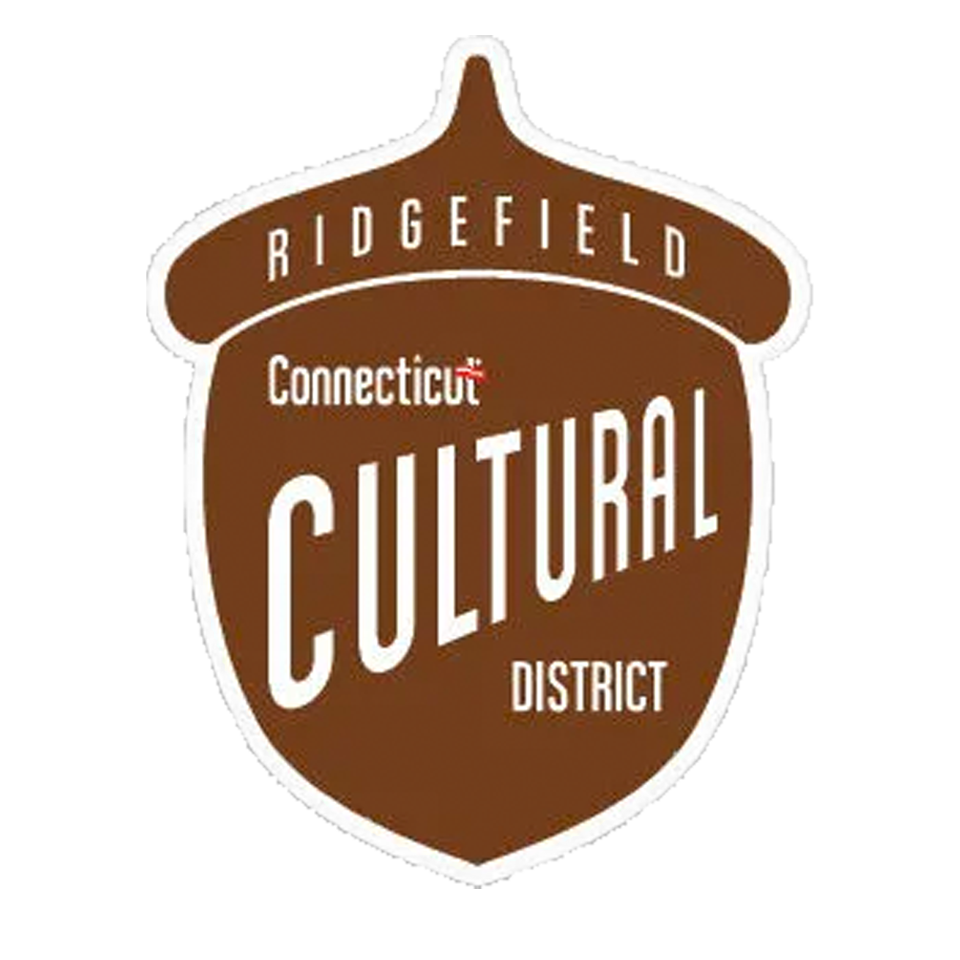The research team was recently invited by the landholders of a property on North Salem Road who wished to participate in the Battle of Ridgefield project. The historic home is near the location where the British army stopped to rest and feed their men on the morning of April 27 and not far from the First Engagement between British forces and American troops under the command of General Wooster.
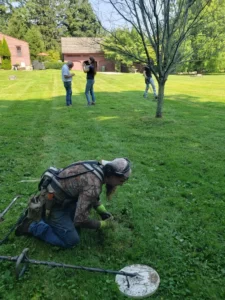
Dr. Kevin McBride and Dr. David Naumec conducted a survey of the property which consisted of metal detecting the yard for lead, brass, and iron objects that may be related to the battle. A typical battlefield survey of a private home includes hours of scanning the landscape with metal detectors and digging at the sites of dozens of positive signals in search of battle-related objects such as brass or pewter buttons, lead musket balls, and iron military buckles among other artifacts.
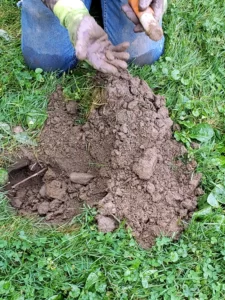
Once a signal is detected the archaeologist recovers the object by peeling back the grass and digging a small hole to pinpoint the artifact which is typically found between 5 to 10 inches deep and rarely deeper than a foot. The artifact is analyzed by the lead archaeologist to determine if it is battle-related or not, its location is recorded using GPS, and the hole is backfilled and covered with the grass plug.
Landholders are encouraged to participate in the dig assisting the research team with detecting and cataloging. A battlefield survey could take up to several days to complete depending on the size of the property and the number of artifacts found, but most surveys are finished in a day. Any battle-related artifacts are turned over to the Ridgefield Historical Society for research and curation as required by the National Park Service (NPS) while all other artifacts are retained by the landholder.
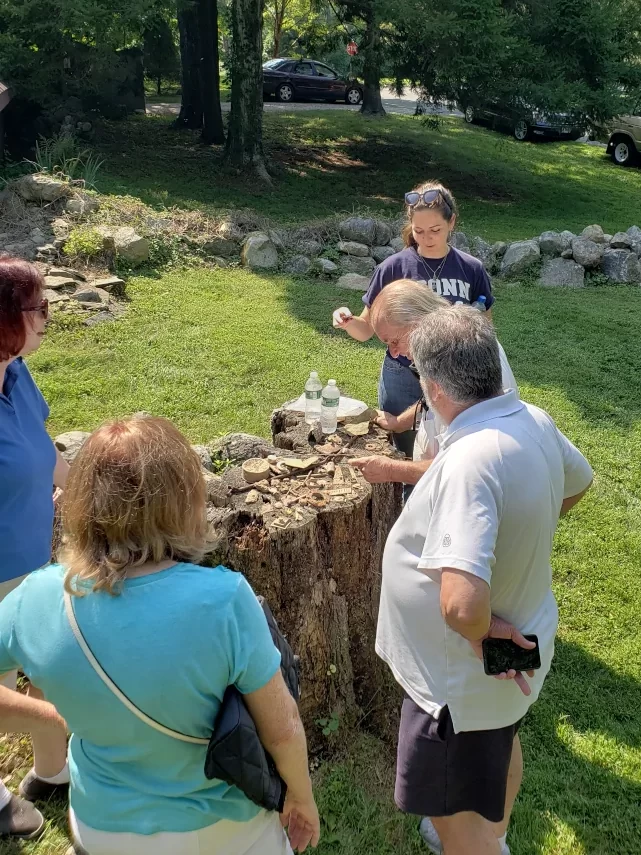
After a day working on the North Salem Road property archaeologists dug upwards of 100 objects, only three of which appeared to be battle related (a brass musket trigger guard fragment, a portion of an early iron frying pan known as a “spider,” and a pewter button). The location of those artifacts was logged, relevant information was recorded, and the items were removed for conservation and analysis. Dozens of such battlefield surveys are planned in the coming year as the Historical Society obtains additional landholder permissions and applies for a second round of NPS funding to conduct a systematic archaeological study of the April 27, 1777 Battle of Ridgefield.
The Ridgefield Historical Society is currently accepting permission forms from landholders along the Route 116 battlefield route, the George Washington Highway, High Ridge, and Soundview Road. Please contact the Ridgefield Historical Society at [email protected] or call (203) 438-5821 if you would like to participate in this exciting project.
Please join our email list for the latest findings and news!
In recognition of the national significance of the April 27, 1777 Battle of Ridgefield, the National Park Service (NPS), American Battlefield Protection Program (ABPP) awarded the Ridgefield Historical Society and the Connecticut State Office of Historic Preservation a Research and Documentation Grant to study the engagement. The scope of the grant includes renewed historical research efforts to reconstruct the Battle of Ridgefield, determine where actions occurred related to the battle, assess the integrity of contributing properties for a possible future archaeological survey, and build community support and seek landholder permissions. Ridgefield Historical Society staff and researchers from Heritage Consultants, LLC are documenting areas in town where fighting occurred in addition to the three most well-known engagements along Route 116 and Main Street. The research team mapped battle-related artifacts recently identified through historical research and public outreach efforts. The results suggest that skirmishing between British and American forces occurred throughout the day in areas well beyond the three famous engagements. With landholder permission, an archaeological survey of these newly identified areas could yield additional evidence of battle and enrich our understanding of what happened during the Battle of Ridgefield.
